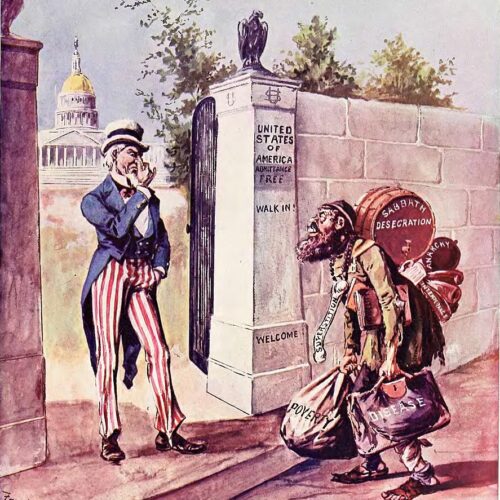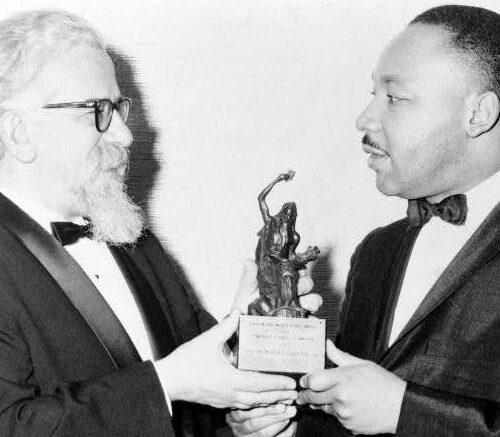Lessons
Give Me Your Huddled Masses: Emma Lazarus and Welcoming the Stranger

State standards
Results
Length: 60-120 minutes | Grades: 6-12 | Themes: Jewish values, immigration
Lesson Overview
The idea of embracing newcomers is a deep-rooted Jewish value, and it took on national significance in the U.S. thanks in large part to Emma Lazarus. In the late 1800s, during a wave of immigration and rising prejudice toward groups like Jews, Irish, and Chinese immigrants, Lazarus penned The New Colossus. Her poem gave voice to the struggles of those seeking safety and a new beginning, and years later, it was placed at the base of the Statue of Liberty. That inscription helped change how Americans viewed the statue – not just as a symbol of abstract ideals, but as a welcoming figure for the tired and displaced. For many immigrant communities, including Jews fleeing persecution and hardship, her words offered both recognition and hope.
This lesson invites students to look at how Emma Lazarus used poetry to express Jewish values, particularly the idea of welcoming those in need. They will explore how her work helped reshape the meaning of the Statue of Liberty at a time when the U.S. was seeing a surge in immigration and also a rise in anti-immigrant attitudes. By examining political cartoons and imagery from the late 19th and early 20th centuries, students will get a clearer picture of how newcomers were portrayed in public discourse. The lesson ends with a creative challenge: students will design their own political cartoon, offering a message of their own to people arriving in America today.
Enduring Understanding
Throughout U.S. history, perceptions of immigrants have provoked xenophobia, nativism, and fear regarding the changing demographics of the country.
Artists and activists have used creative outlets to promote a more inclusive vision of American society.
Emma Lazarus channeled and reflected the Jewish value of welcoming the stranger in her poetry, such as in “The New Colossus” which is found on the Statue of Liberty.
Essential Questions
What does it mean to be a “stranger” or “outsider” in society?
What are ways immigrants and “outsiders” have been perceived and treated in U.S. history?
What is the Jewish value of welcoming the stranger?
Who was Emma Lazarus, and what is her legacy for American society?
Learning Objectives
Students will be able to identify complex perceptions of immigrants in the United States, resulting in moments of hostility over the changing nature of society.
Students will be able analyze the perspective and poetry of Emma Lazarus while also identifying the way she channeled the Jewish value of welcoming the stranger in her art.
Toolkit
-
Give Me Your Huddled Masses lesson plan
-
Give Me Your Huddled Masses slide deck
-
Give Me Your Huddled Masses handout
-
“New Colossus video
-
The Emma Lazarus Project video





